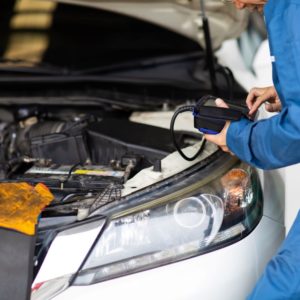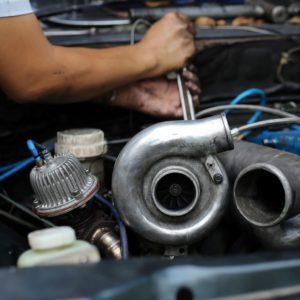The evaporative (EVAP) emission system prevents gasoline fumes and vapors from being released into the atmosphere. It directs the vapors from the fuel tank to the intake where they’re burned in the normal combustion process.
The EVAP system has a canister vent valve that lets fresh air into the system. It is normally open unless the powertrain control module (PCM) commands it to close during testing. When the PCM detects that the valve is stuck, on-board diagnostics (OBD) will log a P2422 code.
What Does the P2422 Code Mean?
Diagnostic trouble code (DTC) P2422 stands for “Evaporative Emission System Vent Valve Stuck Closed.”

The EVAP system’s vent valve is normally open. It only closes when the PCM initiates a test as part of the mandated OBD-II standards. When the PCM detects that the EVAP system is closed even when it shouldn’t, it will set the code P2422.
A DTC P2422 could mean that the valve is stuck closed or can’t be opened due to issues with the control system.
Note: The definition of code P2422 can be different depending on the vehicle manufacturer. Consult the appropriate repair manual or repair database for the exact code definition.
What are the Common Causes of the P2422 Code?
- EVAP vent valve failure
- Wiring issues in the vent valve control circuit
- Defective vent valve solenoid
- Faulty PCM

What are the Common Symptoms of the P2422 Code?
How to Diagnose the P2422 Code
Trouble code P2422 is a generic powertrain code that various makes and models can log. Although vehicles could exhibit similar symptoms, the steps for diagnosis and repair might vary depending on the vehicle’s specifications.
If you’re not familiar with the process of diagnosing trouble codes by yourself, it’s a good idea to bring your vehicle to a certified mechanic. But if you’re a seasoned DIYer and you know your way around a scan tool, then you can go ahead and do it yourself.
To help you out, we’ve gathered a video that show what the process might involve:
How to Fix the P2422 Code
Attempting to fix a P2422 code can be a frustrating and confusing task if you’re not equipped with the right tools and information. If you’re not confident with your DIY skills yet, it might be best to leave the job to the pros.
But if you think you have the automotive know-how to do the job yourself, make sure you have the right manuals before attempting any fixes. Consult guides like those from Chilton or an ALLDATA subscription for vehicle-specific repair information.
Any information provided on this Website is for informational purposes only and is not intended to replace consultation with a professional mechanic. The accuracy and timeliness of the information may change from the time of publication.


















